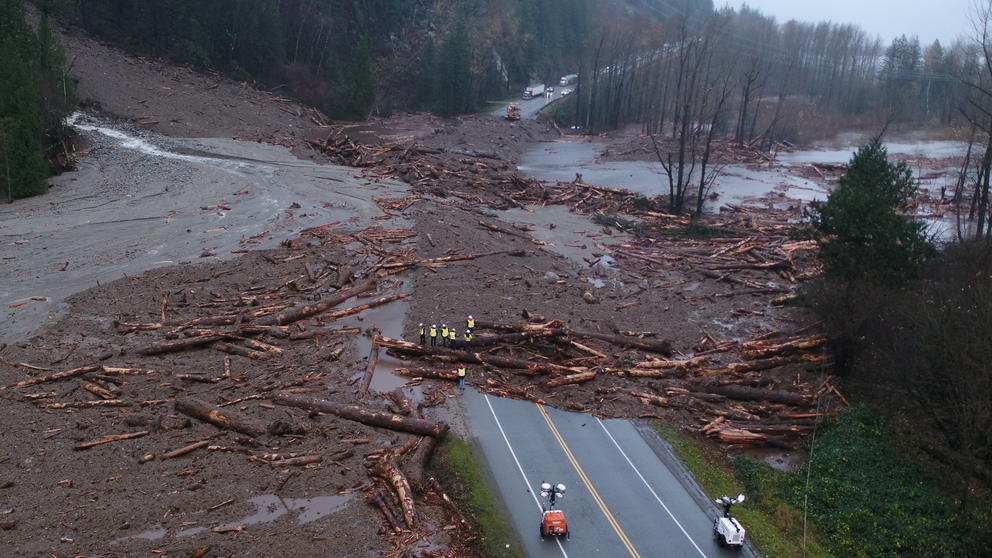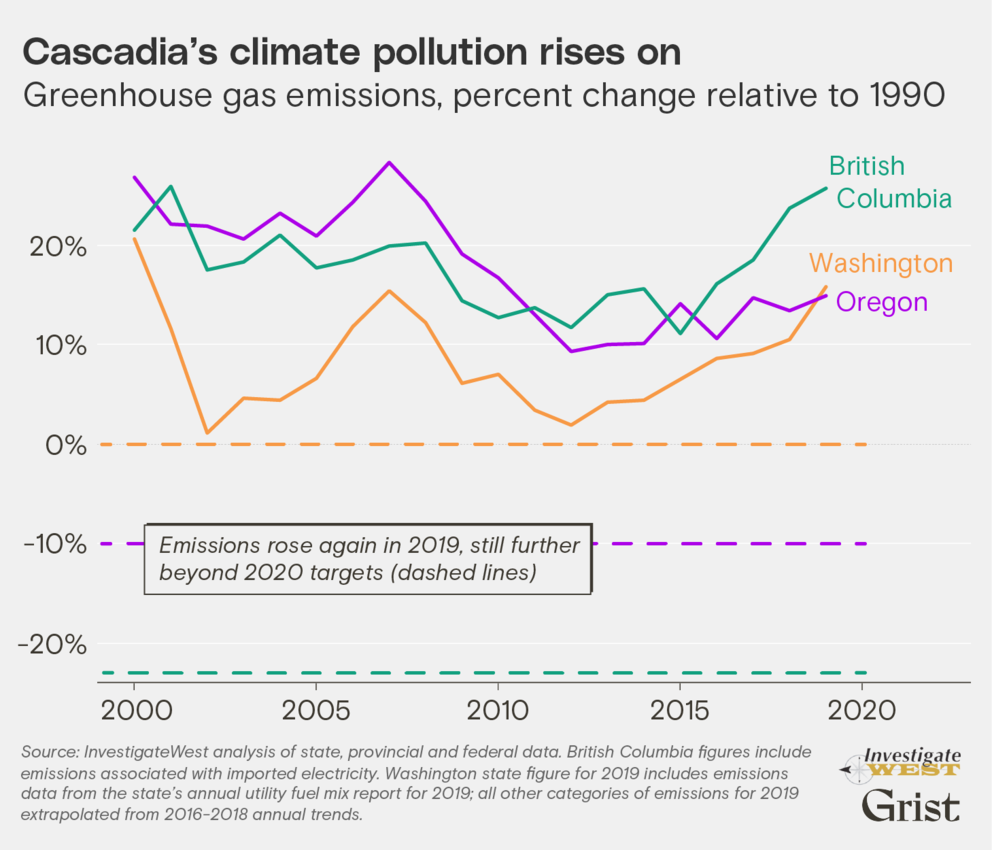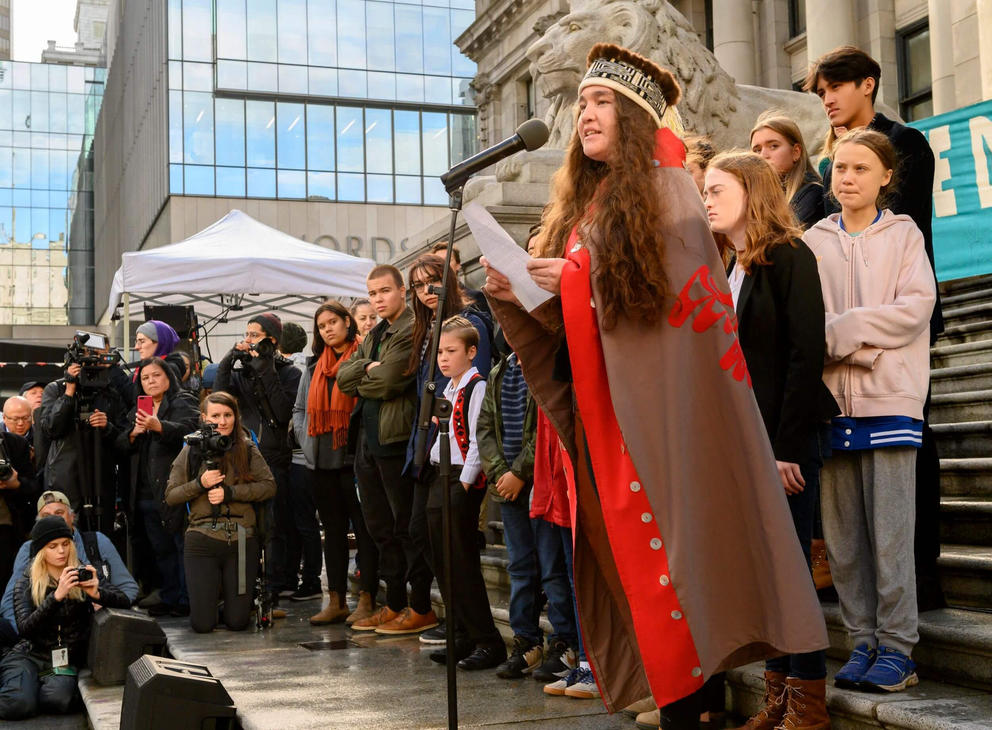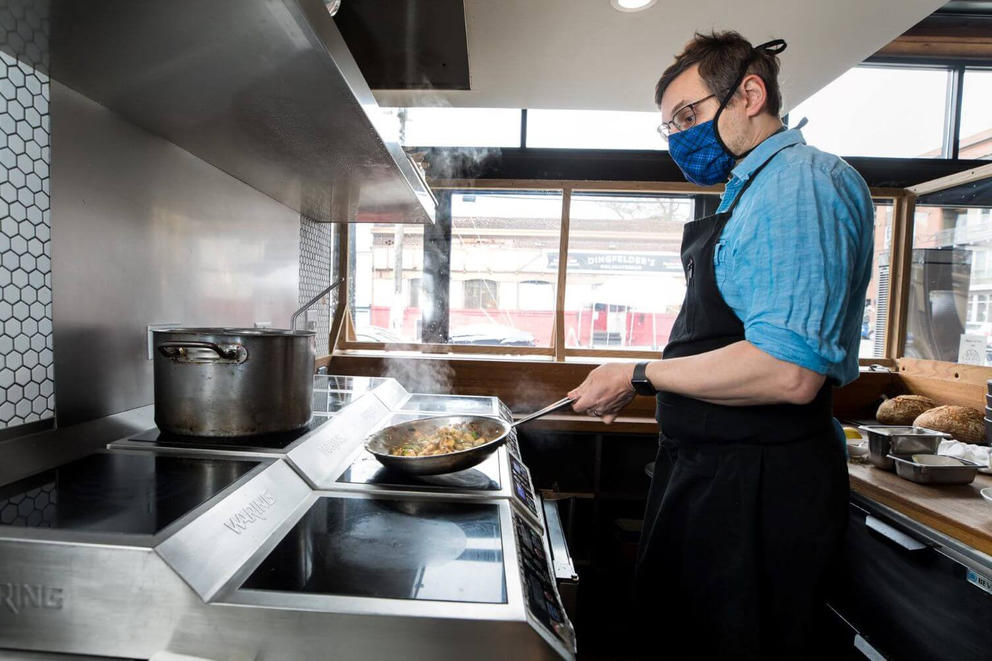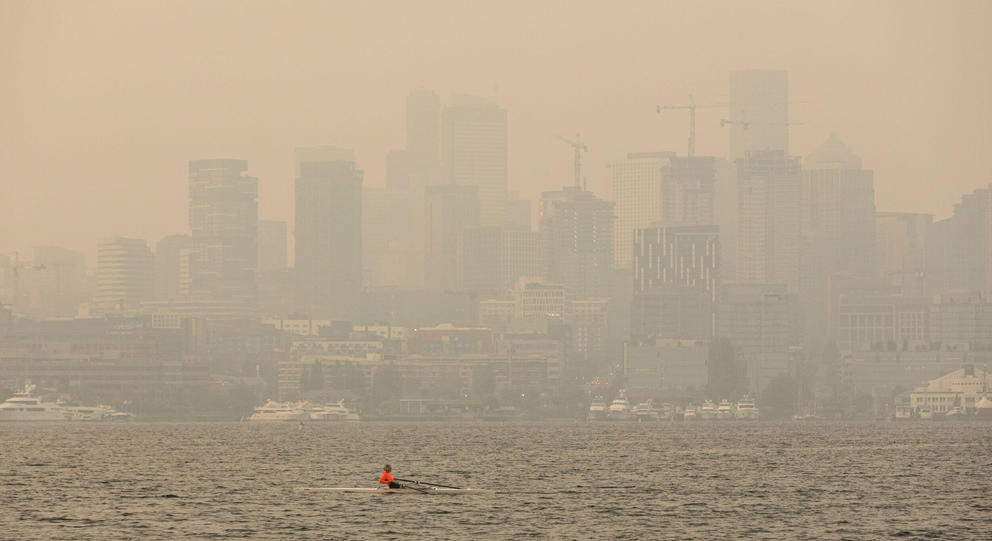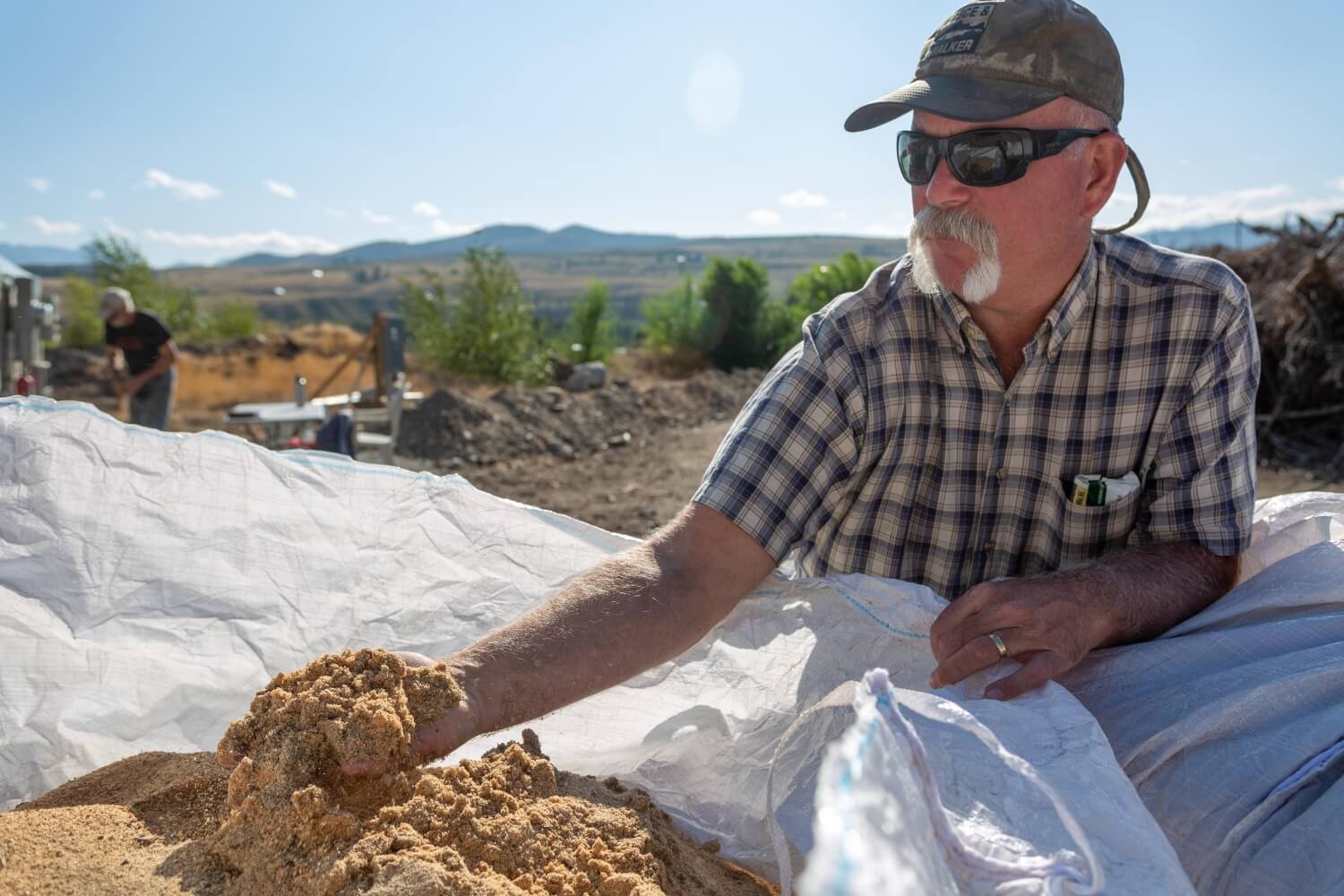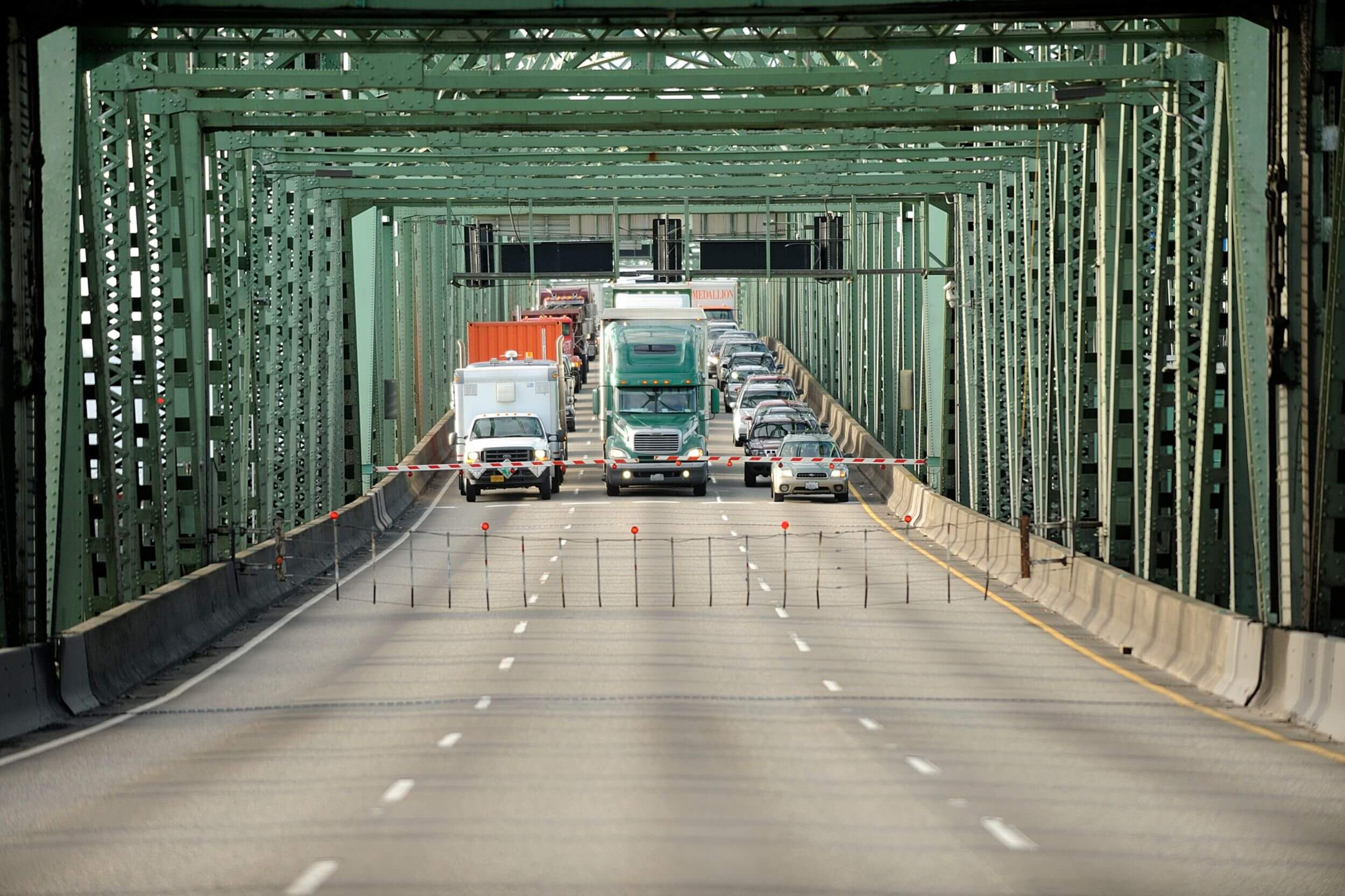When InvestigateWest launched the Getting to Zero: Decarbonizing Cascadia series in January 2021, the latest official data showed that emissions of carbon dioxide, methane and other greenhouse gases had risen steadily from 2012 to 2018, and the region wasn’t on track to make big cuts this decade.
“We have not kept pace with the scope of the crisis,” Catherine Madconald, chair of the Oregon Global Warming Commission, wrote to legislators that month.
Since then, the emissions trend actually got worse. We now know that Cascadia’s greenhouse gas pollution continued to increase in 2019, according to state and provincial data assembled and analyzed by InvestigateWest for this report. And, despite an unprecedented string of 2021 victories by local activists and politicians dedicated to addressing the climate crisis, big gaps remain in the region’s response.
Source: InvestigateWest analysis of state, provincial and federal data. British Columbia figures include emissions associated with imported electricity. Washington state figure for 2019 includes emissions data from the state’s annual utility fuel mix report for 2019; all other categories of emissions for 2019 extrapolated from 2016-2018 annual trends. (InvestigateWest and Grist)
Washington Gov. Jay Inslee acknowledged a shortfall during a press conference last month: “Even with our best-in-the-nation laws, and even with federal action, we don’t have enough on the books today to actually reduce carbon at the pace we need to."
This story is part of the series Getting to Zero: Decarbonizing Cascadia, which explores the path to low-carbon energy for British Columbia, Washington, and Oregon. This project is produced in partnership with InvestigateWest and other media outlets and is supported in part by the Fund for Investigative Journalism.
To cap this year’s series, InvestigateWest grappled with how Cascadia can guard against another lost decade. The answer, according to activists, experts and officials, is to identify the region’s next steps for climate-cutting action and press harder in 2022.
What’s hopeful is that climate policies leaped forward this year in Washington, Oregon and British Columbia. Activists won a string of local victories, passing municipal and regional laws to ban new and expanded fossil fuel developments. Legislators in Washington state and Oregon approved long-stymied climate bills. And the British Columbia government overhauled the province’s climate plan.
“It’s been the best year for action on climate in this region,” says Gregg Small, executive director of Seattle-based regional nonprofit Climate Solutions.
But activists, experts, labor leaders, government officials and even some business leaders interviewed by InvestigateWest still question whether we are on track to deliver on make-or-break 2030 goals.
Climate scientists say humanity must halve carbon emissions by the end of this decade to prevent global warming from causing far more devastating climate swings. By 2050, they say, we must reach net-zero emissions, releasing no more carbon than we can pull back out of Earth’s atmosphere.
The stakes are clear in the string of extreme warming-driven catastrophes that battered Cascadia this year — events that rattled even experts and activists who have spent their entire careers working on climate change. “I am deeply sobered,” says Eileen V. Quigley, executive director of the Clean Energy Transition Institute, a regional think tank based in Seattle. “I had believed that we still had until 2030 before we would start to see serious impacts of warming.”
Quigley was full of hope in January. And in the months that followed, the energy modeling she managed helped drive Cascadia’s legislative breakthroughs. But near 2021’s end, she describes a sense of “immense urgency.”
Once again, as a decade ago, politicians profess that they are on board. “We can't continue to kick the can down the road,” British Columbia Premier John Horgan said a few weeks before record-breaking flooding crippled southern British Columbia in November.
However, leaders on both sides of the border said much the same in the run-up to 2010, when Cascadia set pathbreaking goals to slash climate-altering pollution. Then the leaders fell short on follow-through. What was missing were government policies capable of shoving economic growth onto a track that required less energy from fossil fuels.
Horgan and his counterparts in the U.S. clearly have more carbon-cutting powers in place for this decade. Still, some big gaps remain:
- While simulations suggest that British Columbia’s upgraded plan could meet its 2030 goal, similar models show Washington and Oregon coming up short. And Oregon’s goals — a 45% emissions cut from 1990 levels by 2035 and an 80% cut by 2050 — are well short of Washington and British Columbia’s targets and what climate scientists advise.
- The region’s power grid — part of a larger Western grid — is too weak and fractured to reliably integrate the massive increase in renewable energy needed to decarbonize.
- Cascadia’s rules don’t constrain highway expansion, which tends to increase driving and thus emissions. That’s a particular concern in the United States, where $110 billion from President Joe Biden’s infrastructure bill is headed to the states with few strings attached.
- None of Cascadia’s jurisdictions has proven policies to rein in growing consumption of natural gas, which is backed by a powerful oil and gas industry and associated unions.
Activists say the gaps may be larger still. A key reason: Cascadia’s governments are counting on driving down fossil fuel dependence by charging a fee for carbon pollution to nudge consumers and industries toward cleaner energy. So far, though, that policy has functioned mostly as a source of revenue rather than actually driving emissions reductions in places like California and Europe, because governments made it relatively cheap and easy to comply. Cascadia’s leaders, however, are counting on carbon fees to strongly drive future emissions cuts. In reality, reductions could turn out to be less than advertised. Or rising prices could fuel a political backlash.
Deric Gruen, co-executive director of Seattle-based environmental justice network Front and Centered, also warns that policies designed to encourage cleaner energy may not actually cut fossil fuel use and associated emissions: “While we are adding renewable energy, much of that is going toward increased overall consumption of energy. Which is what our economy is geared to do.”
There are certainly signs of wishful thinking still to be found in 2021 from politicians across the region. InvestigateWest found one half-truth lurking in British Columbia’s latest emissions data.
The province’s official inventory presents carbon emissions as essentially flat in 2019, which is misleading. Factor in the carbon footprint of imported electricity consumed in the province — which is considered best practice for greenhouse gas reporting by many cities, states and regions — and British Columbia’s emissions jumped by more than 1 million metric tons.
In fact, counting all electricity used in British Columbia, the province’s emissions hit an all-time high in 2019.
Does one more year of rising emissions matter? It does, because that’s how decades get lost. One year at a time. A year slips by while the public isn’t paying attention. And then another follows, and the next.
Climate leaders answering InvestigateWest’s inquiries provided no shortage of feasible and measurable actions for the next 12 months to keep that from happening again.
Climate activist Haana Edenshaw speaks from the steps of the Vancouver Art Gallery in Vancouver, British Columbia in 2019. Edenshaw is one of 15 young people from across Canada suing their federal government, alleging that permits and other government actions allowing greenhouse gas pollution violate their constitutional rights and those of future Canadian children. The youth lawsuit was dismissed this year, but oral arguments in their appeal are expected in early 2022. (Our Children’s Trust)
Ensuring a cleaner, reliable grid
The power grid is a linchpin for decarbonization because clean electricity, such as renewable solar and wind power, can take the place of fossil fuels currently used to power vehicles, heat buildings and much more. With the recent passage of a bill to clean up Oregon’s electricity supply, all of the region’s power providers are now legally obligated to eliminate coal-fired power and to slash or eliminate emissions from generators burning natural gas by 2030.
Utilities officials insist they are well positioned to deliver on those mandates. Alas, Cascadia’s mandated build-out of renewable energy sits on some shaky foundations — literally, in British Columbia’s case.
Oregon’s new clean electricity law, which requires an 80% cut in power plant emissions by 2030 (relative to 2010-2012 emissions), followed a comparable voluntary commitment by Portland General Electric. Maria Pope, the utility’s CEO, says the utility will be bringing on additional renewable power starting next year to comply and adding flexible resources such as big batteries to help integrate its variable energy. “We have very clear pathways to 2030,” says Pope.
Josh Jacobs expresses similar confidence for Seattle-based Puget Sound Energy, which distributes both natural gas and electricity. Jacobs, PSE’s vice president for clean energy strategy, says he feels more optimistic about meeting Washington’s net-zero electricity goal for 2030 after the utility drafted its first state-mandated clean power plan this year. “After seeing that plan, it feels like a very reasonable glide path to 2030,” says Jacobs.
Diane Brandt, Oregon policy manager at Portland-based renewable energy advocacy organization Renewable Northwest, says utilities in Washington and Oregon could conceivably outpace the state mandates. Her organization commissioned modeling of Oregon’s policies with Berkeley, California-based nonprofit GridLab and Quigley’s Clean Energy Transition Institute think tank. They discovered that meeting targets early will save money both for utilities and their consumers.
Other factors could conspire to leave utilities short, however. British Columbia is counting on a new hydropower plant to provide the extra clean power it needs to push vehicles, buildings and industries off of petroleum and natural gas. But provincial utility BC Hydro is erecting its Site C Dam megaproject on fractured sediment. The resulting instability is multiplying the project’s cost and could ultimately force the dam to operate below its design capacity or be scrapped altogether. The project also faces a legal challenge from First Nations.
Meanwhile, shifting patterns of precipitation threaten carbon-free hydropower supplies across the region. Lower reservoirs in 2019 contributed to the emissions jumps in Washington and Oregon, as those states burned more fossil fuels to produce electricity.
Scott Bolton, senior vice president for transmission development at Portland-based PacifiCorp, calls the growing uncertainty of rain- and snow-driven hydropower part of the “race” to decarbonize. Cascadia must quickly augment this historically dominant power source with wind, solar and other clean energy sources.
Grid experts and industry officials such as Bolton and Pope say a big solution is strengthening the power grid and its coordination so states and provinces across the West can share renewable energy surpluses and backup energy supplies, such as green hydrogen.
One solution within reach for 2022 is completing rules for enhanced energy sharing across the West, including an expanded voluntary market for Cascadia’s utilities to trade power and another system for sharing backup reserves. Bolton says, “2022 will be the year that we get it put together, and 2023 will be the year that it starts up.”
Guiding greener growth
Policies to clean up the rest of modern living — particularly how we get around and how we energize our buildings — remain Cascadia’s greatest challenge. While electrical power generation has generally gotten cleaner over the past decade, emissions from transportation and buildings have been growing with the region’s population. Policy upgrades in 2021 add some guardrails to push those sectors toward lower-carbon energy.
Thanks to this year’s legislative breakthroughs, all three of Cascadia’s jurisdictions now have the key growth-guiding policies that have established California as an energy-transition leader:
- Clean fuel standards to ratchet down the carbon content of motor fuels.
- Sales mandates that force automobile manufacturers to phase out gasoline and diesel-fueled cars and trucks.
- Systems to make carbon polluters pay for each ton of carbon dioxide they emit.
These three programs make climate-friendly consumer options less expensive and more available. They generate revenue to build critical infrastructure such as charging stations for electric vehicles and support clean energy upgrades for low-income residents. And they guide private investment by telling industries and consumers where things are going.
Climate Solutions’ Small and many others interviewed by InvestigateWest say that Job 1 for 2022 is for bureaucrats to break with traditional government practices and adopt an emergency posture to quickly pass rules that meet the climate crisis. Merran Smith, executive director of Vancouver, British Columbia-based nonprofit Clean Energy Canada and a member of British Columbia’s Climate Solutions Council, says governments need to act decisively — just as they’ve done to combat COVID-18.
“We cannot discuss and debate and consult endlessly. These policies really need to hit the ground quickly, much faster than we are doing,” says Smith.
Another way for governments to speed up progress in 2022 is to follow the ambition of their neighbors where they have more stringent rules on a given issue.
For example, Washington and Oregon can follow British Columbia’s rules to phase in zero-emissions vehicles, which are now North America’s most stringent. Sales of electric cars shot past the province’s original 2025 target by 2020, so it moved up its gasoline and diesel vehicle phaseout. Automotive suppliers’ sales must be 90% carbon-free by 2030 — triple British Columbia’s previous target.
And Oregon and British Columbia can adopt the policy innovation in Washington’s new cap-and-trade law, which sets annual caps for carbon pollution from major industries and creates a market requiring them to buy permits for every ton of carbon they release.
Existing carbon markets, such as California’s, allow more pollution than they should by giving regulated industries credit for financing carbon-cutting activities, such as forest conservation, critics say. Weak or faulty rules for such “carbon offsets” allow market players to overstate the pollution cuts behind them. But Washington’s new Climate Commitment Act includes a seemingly fail-safe mechanism to combat such manipulation.
Offsets that are used to comply with Washington’s program may still prove unreliable or ephemeral. But the program aims to limit the damage by ratcheting back the amount of pollution permitted each year, below what’s allowed by law. That way, even if some companies come up short, the state as a whole makes its goal. In short, faulty offsets should not undermine the state’s emissions targets.
Executive chef Stuart Lane preparing cavatelli con asparagi — pasta with asparagus and spring onions — on the induction “burners” at Seattle’s Artusi wine-bar. The electric stovetops induce a magnetic field to heat the pans, making them quick and controllable. But, unlike gas burners, they produce no air pollution. (Dan DeLong/InvestigateWest)
Stepping off the gas
Cascadia’s least-finished climate business is the growing use of so-called “natural” gas. That’s where Inslee plans to focus his 2022 efforts. Many new homes and businesses are heated with natural gas, making buildings the state’s fastest-growing source of emissions. All told, Washington state projects that it needs further policies or mandates that can cut 6.4 million metric tons of carbon — about 13% of the emissions reduction required by 2030.
Anna Lising, a senior climate adviser to Inslee, says the governor has mapped out several strategies for 2022 to cut gas use in buildings. Those include strengthening the statewide building code to favor high-efficiency electric equipment, such as heat pumps that can heat and cool homes and businesses, and seeking legislation to apply the state’s energy performance standards to cover a wider range of buildings.
Environmentalists say Washington and Oregon need to take stronger action, essentially ending gas hookups entirely for new buildings. But anti-electrification lobbying and advertising by Puget Sound Energy, other gas-distributing utilities such as Avista, and some unions representing their workers thwarted Washington legislation to do that last year.
The natural gas industry’s political power really shows in Oregon. Gov. Kate Brown directed the state’s Public Utility Commission to “leverage” the state’s nascent carbon-pricing program to “advance decarbonization.” Environmentalists looked to the PUC to respond with a broad inquiry into how the state can phase out natural gas. Instead the PUC constrained itself to considering how pricing carbon might raise gas rates and hurt consumers.
A July 2021 filing led by attorneys at Portland-based Lewis & Clark Law School’s Green Energy Institute raised concerns that the PUC’s inquiry would be “driven by” utilities, which have a vested interest in selling more gas.
Small says further efforts to pass gas bans at the local level are needed in 2022 to set up statewide success later. “There needs to be a little more work done at the municipal level, more pressure on utilities to see writing on the wall, before we’ll get state action,” he says.
And despite the United Nations secretary-general’s appeal for an end to new fossil fuel infrastructure, and some local wins to stop it in Cascadia, new projects keep squeaking through. That’s especially true in British Columbia, where construction is underway on a liquefied natural gas megaproject and a gas pipeline to feed it that’s being driven through unceded First Nations territory without consent. (Not to mention the Trans Mountain Pipeline expansion, which would deliver seven times more diluted bitumen from Alberta to tankers in Vancouver and Washington refineries.)
Fossil fuel development in British Columbia may not stop there. Additional LNG plants and expansions could still go forward, encouraged by the province’s growing subsidies for natural gas drilling and muscular repression of fossil fuel protests. The province’s police force — a unit of the Royal Canadian Mounted Police — arrests members of sovereign First Nations who seek to block the Coastal GasLink pipeline from crossing their traditional territories, while the government does little to enforce environmental protection laws violated by the project.
Recently, police in British Columbia began arresting journalists documenting First Nations protests.
Taking action
During the recent United Nations Climate Change Conference in Glasgow, Scotland, the Union of British Columbia Indian Chiefs called for the province to stop investing in gas production. Stewart Phillip, the group’s president and grand chief of the Okanagan Nation, called the wildfires, heat dome, crop failures and dwindling salmon stocks that British Columbia is experiencing a “warning sign that the window for meaningful climate action is narrowing.”
In spite of such warnings, there’s always a risk that politics could swing against action, threatening the limited momentum that Cascadia’s energy transition has mustered. Federal support for Washington and Oregon could dry up if Republicans win back control of Congress and the White House.
Oregon’s climate policies are particularly vulnerable to political winds. Many of its efforts — including the nearly finalized carbon fee program — are backstopped by a 2020 executive order by Brown. That means if she leaves office, that commitment could evaporate.
A leading contender to replace the term-limited governor in next year’s election is state Sen. Betsy Johnson, a conservative Democrat who helped defeat cap-and-trade legislation, saying it could “cripple” Oregon’s economy. Johnson has accepted more than $100,000 from energy-intensive industries.
If there’s a silver lining to 2021’s disastrous weather, it’s that more Cascadians appear to be ready for action. If decades can be lost one year at a time, civil rights activism and other social movements have shown that they can also be won with relentless action, one year after another, driving change.
Angus Duncan, a Portland-based climate policy consultant and former chair of the Oregon Global Warming Commission, prefaced his action short list by saying that there are “innumerable actions, large and small, that should be taken immediately or sooner” — actions that he says are “practical, economic and achievable” with “only politics and inertia in the way.”
After consulting with Duncan and several dozen business and labor leaders, experts, activists and government officials, we have chosen 25.

